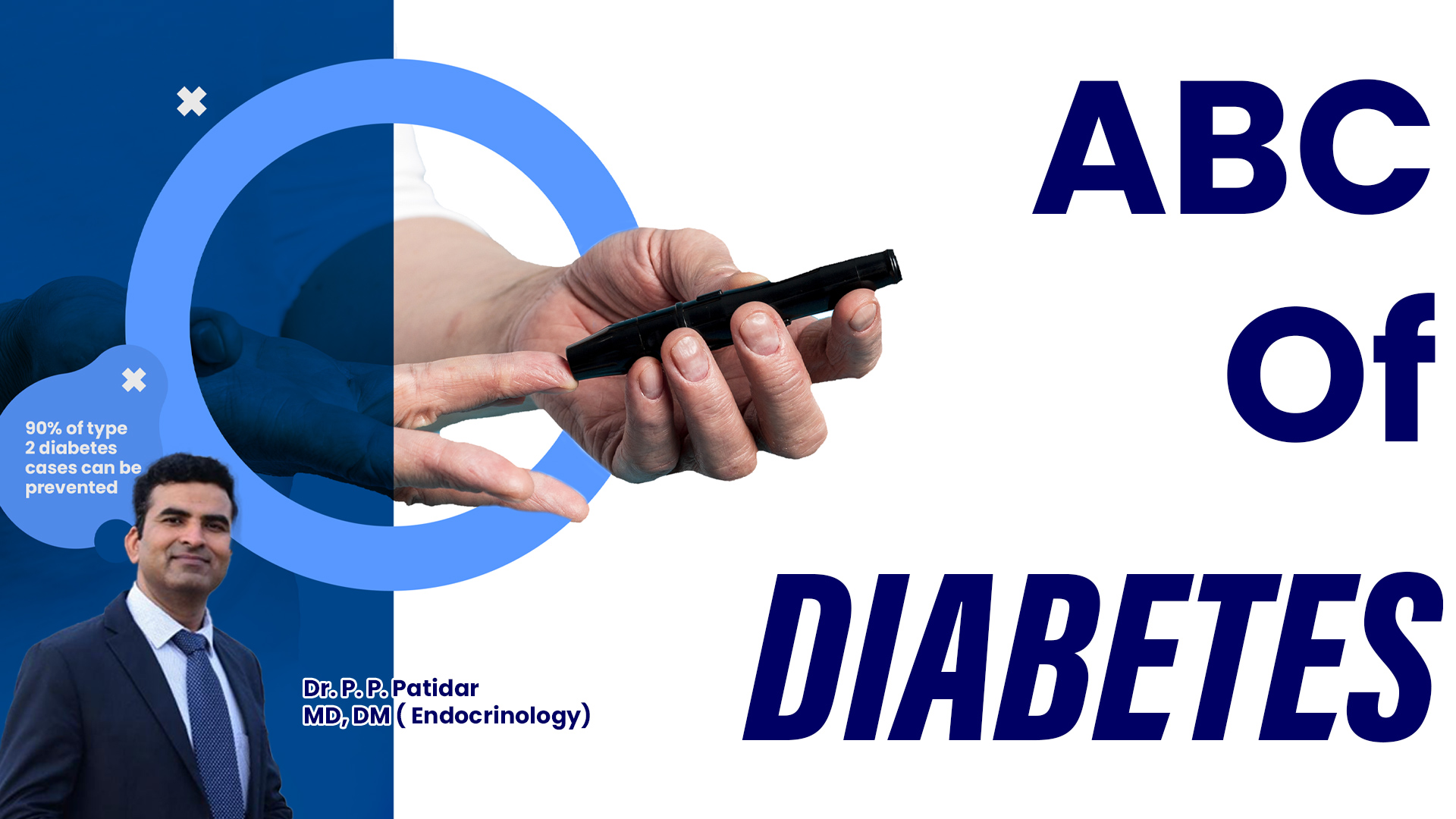Diabetes is a chronic, metabolic disease characterized by elevated levels of blood glucose, which leads over time to serious damage to the heart, blood vessels, eyes, kidneys, foot and nerves. Type 1 diabetes, once known as juvenile diabetes or insulin-dependent diabetes, is a chronic condition in which the pancreas produces little or no insulin by itself. For people living with diabetes, access to affordable treatment, including insulin, is critical to their survival. The most common is type 2 diabetes, which occurs when the body becomes resistant to insulin or doesn't make enough insulin. In the past 3 decades the prevalence of type 2 diabetes has risen dramatically in countries of all income levels. There is a globally agreed target to halt the rise in diabetes and obesity by 2025.
About 422 million people worldwide have diabetes, the majority living in low-and middle-income countries, and 1.5 million deaths are directly attributed to diabetes each year. Both the number of cases and the prevalence of diabetes have been steadily increasing over the past few decades. As per Indian Council of Medical Research – India Diabetes (ICMR INDIAB) study published in 2023, the prevalence of diabetes in India is 101 million.
Every year, a distinctive theme takes center stage, and for World Diabetes Day 2023, the spotlight is on ‘Empowering Global Health.’ This theme not only revolves around individual well-being but also emphasizes the collective effort needed to address this worldwide challenge. The overarching theme for World Diabetes Day from 2021 to 2023 is Access to Diabetes Care. In 2023, the campaign zeroes in on the crucial aspects of delaying or preventing type 2 diabetes and associated complications, encapsulated in the slogan “Know your risk, Know your response.”
Diabetes can be managed well but the potential complications are the same for type 1 and type 2 diabetes. Early diagnosis and optimal self-management and treatment have been shown to reduce the risk of diabetes-related complications.
We know diabetes:
- Is the leading cause of blindness in working age adults.
- Is a leading cause of kidney failure and dialysis.
- Increases the risk of heart attacks and stroke by up to four times.
- Is a major cause of limb amputations.
- Affects mental health as well as physical health. Depression, anxiety and distress occur in more than 30% of all people with diabetes.
Type 2 diabetes is increasing at the fastest rate. There are large numbers of people with silent, undiagnosed type 2 diabetes which may be damaging their bodies. Type 2 diabetes is one of the major consequences of the modern lifestyle. The combination of easy availability of high energy foods at cheap prices, combined with more sedentary work and less physical activity, means most populations are developing more type 2 diabetes.
Symptoms
Symptoms of type 1 diabetes can start quickly, in a matter of weeks. Symptoms of type 2 diabetes often develop slowly over the course of several years and can be so mild that you might not even notice them. Many people with type 2 diabetes have no symptoms. By the time symptoms are noticed, complications of diabetes may already be present.
Common symptoms include:
- Increased thirst and urination
- Increased hunger
- Blurred vision
- Numbness or tingling in the feet or hands
- Sores that do not heal
- Unexplained weight loss
- Feeling tired and lethargic
- Itching, skin infections
- Urinary tract or fungal infections
- Mood swings
- Headaches
- Feeling dizzy
- Leg cramps
Types of Diabetes
Type 1 diabetes occurs when your immune system, the body’s system for fighting infection, attacks and destroys the insulin-producing beta cells of the pancreas. Type 1 diabetes is caused by genes and environmental factors, such as viruses, that might trigger the disease.
Type 2 diabetes is most common form of diabetes and caused by several factors, including lifestyle factors and genes.You are more likely to develop type 2 diabetes if you are not physically active and are overweight or have obesity. The location of body fat also makes a difference. Extra belly fat is linked to insulin resistance, type 2 diabetes, and heart and blood vessel disease. Certain genes may make you more likely to develop type 2 diabetes. The disease tends to run in families and occurs more often in these racial/ethnic groups.
Gestational diabetes, a type of diabetes that develops during pregnancy, is caused by the hormonal changes of pregnancy along with genetic and lifestyle factors. Hormones produced by the placenta contribute to insulin resistance, which occurs in all women during late pregnancy. As with type 2 diabetes, extra weight is linked to gestational diabetes.
Monogenic diabetes is caused by mutations, or changes, in a single gene. These gene mutations cause diabetes by making the pancreas less able to make insulin. The most common types of monogenic diabetes are neonatal diabetes and maturity-onset diabetes of the young (MODY). Neonatal diabetes occurs in the first 6 months of life.
Cystic fibrosis produces thick mucus that causes scarring in the pancreas. This scarring can prevent the pancreas from making enough insulin.
Hemochromatosis causes the body to store too much iron. If the disease is not treated, iron can build up in and damage the pancreas and other organs.
Cushing’s syndrome occurs when the body produces too much cortisol—often called the “stress hormone.”
Acromegaly occurs when the body produces excess of growth hormone.
Hyperthyroidism occurs when the thyroid gland produces excess thyroid hormone.
Pancreatitis, pancreatic cancer, and trauma can all harm the beta cells or make them less able to produce insulin, resulting in diabetes. If the damaged pancreas is removed, diabetes will occur due to the loss of the beta cells.
Certain medicines can harm beta cells or disrupt the way insulin works. These include
- Steroids
- Niacin
- Anti retroviral drugs
- Post transplant medicine
- Diuretics
- Statins
- Anti-epileptic drugs
- Psychiatric drugs
- Pentamidine
Screening
It is important to do screening tests in people at risk of type 2 diabetes, including those who are/ have
- 35 years or older
- Overweight or obesity
- A sedentary lifestyle
- A family history of diabetes
- Prediabetes
- Had diabetes during pregnancy or had a baby who weighed more than 4kg at birth
- High blood pressure
- A lipid disorder such as high cholesterol
- Cardiovascular disease
- Fatty liver disease
- Polycystic ovary disease
- Racial or ethnic ancestry that is associated with high risk
- HIV infection
People with these risk factors should be screened for diabetes at least once every three years.
Criteria for the diagnosis of diabetes are:
FPG ≥126 mg/. Fasting is defined as no caloric intake for at least 8 h.
OR
2-h PG ≥200 mg/dL The test should be performed using 75 g anhydrous glucose.
OR
A1C ≥6.5%.
OR
A random plasma glucose≥200 mg/dL in a patient with classic symptoms of hyperglycemia or hyperglycemic crisis,
Complications
- Heart Disease and Stroke. Cardiovascular disease causes up to 65% of all deaths in people with diabetes.
- Peripheral Arterial Disease.
- Retinopathy (Blindness).
- Nephropathy (Renal Disease).
- Peripheral Neuropathy.
- Lower-Extremity Amputations.
Diabetes treatment goals
- Between 80 and 130 mg/dL fasting (before meals)
- Less than 180 mg/dL 2 hours after meals
- Hemoglobin A1C levels should be less than 7%.
Treatment of Diabetes Mellitus
- Diet
- Exercise
- Weight loss
- Education
- In type 1 diabetes, insulin injections
- In type 2 diabetes, often medications by mouth and sometimes insulin or other medications by injection.
Prevention
Type 2 diabet
Diabetes is a chronic, metabolic disease characterized by elevated levels of blood glucose, which leads over time to serious damage to the heart, blood vessels, eyes, kidneys, foot and nerves. Type 1 diabetes, once known as juvenile diabetes or insulin-dependent diabetes, is a chronic condition in which the pancreas produces little or no insulin by itself. For people living with diabetes, access to affordable treatment, including insulin, is critical to their survival. The most common is type 2 diabetes, which occurs when the body becomes resistant to insulin or doesn't make enough insulin. In the past 3 decades the prevalence of type 2 diabetes has risen dramatically in countries of all income levels. There is a globally agreed target to halt the rise in diabetes and obesity by 2025.
Recent advancement in field of Diabetes management-
Insulin pump therapy is a key aspect of diabetes management, providing precise insulin delivery for individuals with diabetes. The new insulin pump (780G) pump, a notable advancement, integrates advanced features to enhance glycemic control. With its closed-loop system, the pump continuously monitors glucose levels and adjusts insulin delivery, promoting stability and reducing the risk of highs and lows. The user-friendly interface, along with customizable settings, empowers individuals to tailor their treatment. Moreover, this new insulin pump (780G) exemplifies the evolution of diabetes care, offering improved convenience and potentially transforming the lives of those managing diabetes.
This new insulin pump is a cutting-edge insulin delivery system for diabetes management. Its closed-loop system monitors glucose levels and adjusts insulin delivery, promoting stability. With a user-friendly interface and customizable settings, it provides flexibility and convenience for individuals managing diabetes. The pump represents a significant advancement in diabetes care, offering precise control and potential lifestyle improvements.












Recent comments
Latest Comments section by users
Guest
Nov 14, 2023
As the number of pre diabetics are increasing, complications r same as in diabetic,more over they r not knowing it,so they should be given more attention.Over all it is nice presentation, congratulations dr.Patidar ji👍👍👏👏
dwUQQUrL
May 11, 2024
555
dwUQQUrL
May 11, 2024
555
dwUQQUrL
May 11, 2024
555
dwUQQUrL
May 11, 2024
555
dwUQQUrL
May 11, 2024
555
dwUQQUrL
May 11, 2024
hAzqjFGT
dwUQQUrL
May 11, 2024
-1 OR 2+351-351-1=0+0+0+1 --
dwUQQUrL
May 11, 2024
-1 OR 2+786-786-1=0+0+0+1
dwUQQUrL
May 11, 2024
-1' OR 2+483-483-1=0+0+0+1 --
dwUQQUrL
May 11, 2024
-1' OR 2+352-352-1=0+0+0+1 or 'iutIlDFi'='
dwUQQUrL
May 11, 2024
-1" OR 2+735-735-1=0+0+0+1 --
dwUQQUrL
May 11, 2024
if(now()=sysdate(),sleep(15),0)
dwUQQUrL
May 11, 2024
0'XOR(if(now()=sysdate(),sleep(15),0))XOR'Z
dwUQQUrL
May 11, 2024
0"XOR(if(now()=sysdate(),sleep(15),0))XOR"Z
dwUQQUrL
May 11, 2024
(select(0)from(select(sleep(15)))v)/*'+(select(0)from(select(sleep(15)))v)+'"+(select(0)from(select(sleep(15)))v)+"*/
dwUQQUrL
May 11, 2024
-1; waitfor delay '0:0:15' --
dwUQQUrL
May 11, 2024
-1); waitfor delay '0:0:15' --
dwUQQUrL
May 11, 2024
1 waitfor delay '0:0:15' --
dwUQQUrL
May 11, 2024
quxP15Br'; waitfor delay '0:0:15' --
dwUQQUrL
May 11, 2024
-5 OR 875=(SELECT 875 FROM PG_SLEEP(15))--
dwUQQUrL
May 11, 2024
-5) OR 29=(SELECT 29 FROM PG_SLEEP(15))--
dwUQQUrL
May 11, 2024
-1)) OR 261=(SELECT 261 FROM PG_SLEEP(15))--
dwUQQUrL
May 11, 2024
eY9Sq8Lg' OR 925=(SELECT 925 FROM PG_SLEEP(15))--
dwUQQUrL
May 11, 2024
HCSzdRfQ') OR 297=(SELECT 297 FROM PG_SLEEP(15))--
dwUQQUrL
May 11, 2024
xyaSvh1e')) OR 651=(SELECT 651 FROM PG_SLEEP(15))--
dwUQQUrL
May 11, 2024
555*DBMS_PIPE.RECEIVE_MESSAGE(CHR(99)||CHR(99)||CHR(99),15)
dwUQQUrL
May 11, 2024
555'||DBMS_PIPE.RECEIVE_MESSAGE(CHR(98)||CHR(98)||CHR(98),15)||'
dwUQQUrL
May 11, 2024
1'"
dwUQQUrL
May 11, 2024
@@MDwC9
dwUQQUrL
May 11, 2024
555
dwUQQUrL
May 11, 2024
555
dwUQQUrL
May 11, 2024
555
dwUQQUrL
May 11, 2024
555
dwUQQUrL
May 11, 2024
555